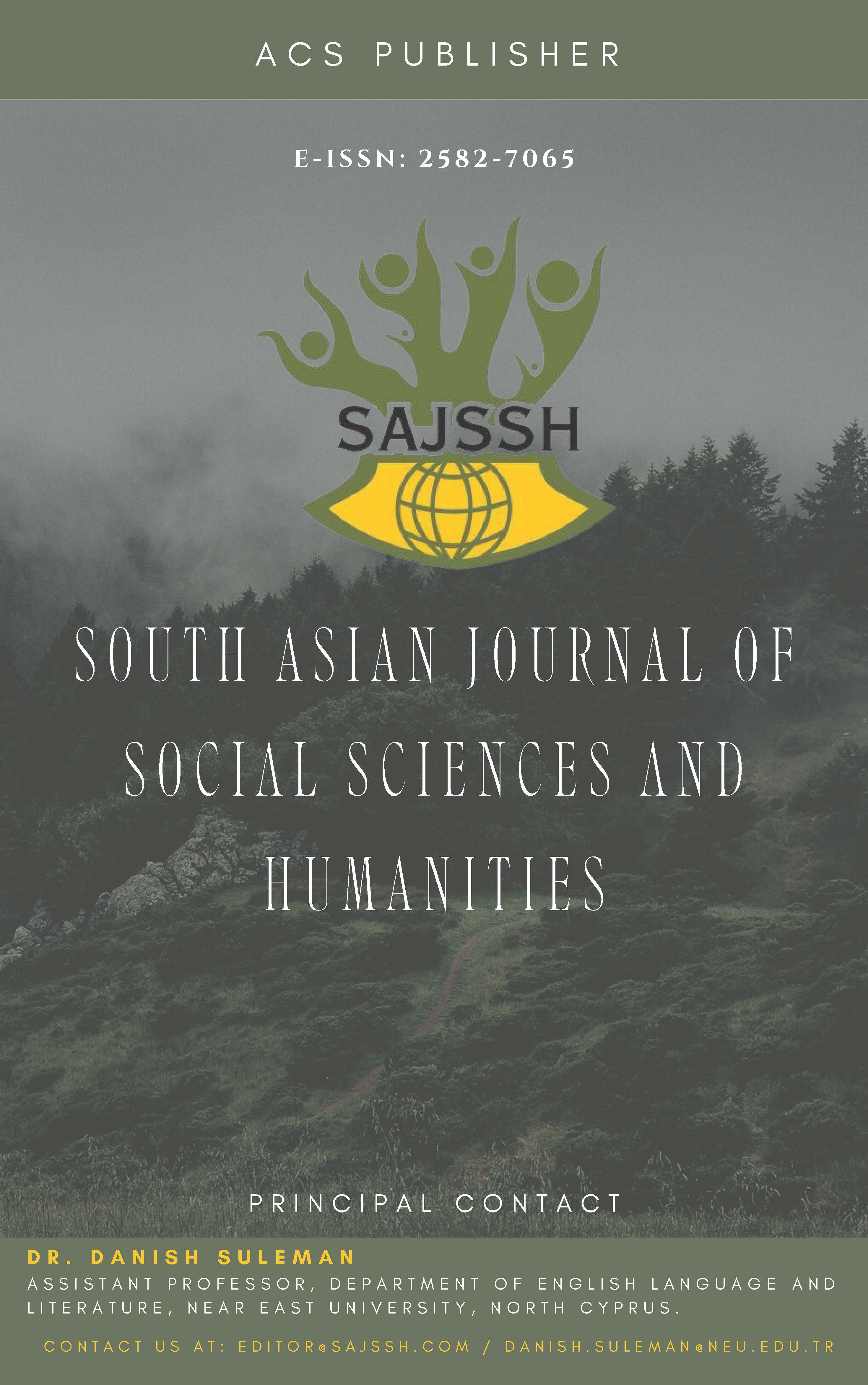Rhetorical & Persuasive Language: A Critical Discourse Analysis of Malala Yousafzai's Nobel Lecture
DOI:
https://doi.org/10.48165/sajssh.2021.2203%20Keywords:
Critical Discourse Analysis, Malala Yousafzai, Nobel peace prize, Fairclough’s theory, girls’ education.Abstract
This paper makes an effort to present a Critical Discourse Analysis (CDA) of Malala Yousafzai’s Nobel peace prize lecture which was delivered on the 10th of December 2014 at the Oslo City Hall, Norway. More explicitly, the present research paper attempts to search concealed messages and ideologies that have been encrypted in Malala Yousafzai Nobel peace prize acceptance speech and how did she deliver her speech figuratively and persuasively. The techniques of collecting data were done by searching the transcript of Malala’s speech on the internet, interpreting it, retyping all the sentences which contained figurative and persuasive language, and coding data. The method makes use of Fairclough’s theory of critical discourse analysis that explicates ideology based on the text analysis, discourse practice, and sociocultural practice at the micro-level only. The speaker attains interaction and engagement with the addressees by means of using verbal expressions and figurative language in her speech. The paper discloses that Malala delivered her speech as a movement to defend girls’ education and women’s rights by using figurative and persuasive language. The finding displays that the ideology of Malala Yousafzai’s speech is women empowerment, girls’ education and giving quality education for all hegemonized and marginalized children of the oriental world.
References
Altam, S. (2020a). Influence of social media on EFL Yemeni learners in Indian Universities during COVID-19 Pandemic. Linguistics and Culture Review, 4(1), 35-47. https://doi.org/10.37028/lingcure.v4n1.19
Altam, S. (2020b). Second language acquisition (SLA) from Krashenian point of view. Langlit An International Peer-Reviewed Open Access Journal, Two Day Multidisciplinary International Webinar On “Role Of Language In Human Development: A Holistic Approach” Organized by Department of English, Dr. Babasaheb Ambedkar Marathwada University, Aurangabad & S.M. Dnyandeo Mohekar Mahavidyalaya, Kalamb, Maharashtra, India (Special Issue), 132-140.
Barry, D., Carroll, B., & Hansen, H (4 May 2006). "Narrative and Discursive Organizational Studies To Text or Context? Endotextual, Exotextual, and Multi-textual Approaches to Narrative and Discursive Organizational Studies". Organization Studies. 27 (8): 1091. doi:10.1177/0170840606064568. S2CID 144525452
Blommaert, J., & Bulcaen, C (2000). "Critical Discourse Analysis". Annual Review of Anthropology. 29 (1): 447–466. doi:10.1146/annurev.anthro.29.1.447.
Charteris-Black, J. (2011). Politicians and Rhetoric: The Persuasive Power of Metaphor. Basingstoke: Palgrave Macmillan.
Cambridge Dictionary | English Dictionary, Translations & Thesaurus. (2021). Retrieved 14 February 2021, from https://dictionary.cambridge.org/
Condor, S., Tileagă, C., & Billig, M. (2013). “Political Rhetoric”. Oxford Handbooks Online. Oxford University Press. Pp. 1-28.
Cockcroft, R. & Cockcroft, S. M. (1992). Persuading People: An Introduction to Rhetoric. Basingstoke: Macmillan.
Fairclough, N. (2001). Language and Power. Longman. ISBN 978-0-582-41483-9
Fairclough, N. (1995). Critical Discourse Analysis: The Critical Study of Language. Longman. ISBN 978-0582219847.
Fowler, R ; Bob, H., Gunther, K., Tony, T, (1979). Language and Control. Routledge. ISBN 978- 0-7100-0288-4.
Grenager S., A. (2016). ‘One book, one pen, one child, and one teacher can change the world!’ A study of personal pronouns, modality and rhetorical devices in a selection of Malala Yousafzai’s speeches. (M.A). The University of Oslo.
Guo, F., Liu, K. (17 May 2016). "A Review on Critical Discourse Analysis". Theory and Practice in Language Studies. 6 (5): 1076–1084. doi:10.17507/tpls.0605.23. ISSN 1799-2591
McKinnon, K. (2013, January). Will Malala’s influence stretch to Europe? Deutsche Welle. Retrieved from: http://www.dw.com/en/will-malalas-influence-stretch-to147 Europe/a 16532149
Nobel Lecture by Malala Yousafzai (2014). http://www.nobelprize.org/nobel_prizes/peace/laureates/2014/yousafzai- lecture_en.html. Accessed: November 2015.
Oxford Learner's Dictionaries | Find definitions, translations, and grammar explanations at Oxford Learner's Dictionaries. (2021). Retrieved 14 February 2021, from https://www.oxfordlearnersdictionaries.com/
Perloff, R. M. (2003). The Dynamics of Persuasion: Communication and Attitudes in the 21stCentury(2ndEd.). New Jersey: Lawrence Erlbaum Associate
Roffee, J. A. (2016). "Rhetoric, Aboriginal Australians and the Northern Territory intervention: A socio‐legal investigation into pre‐legislative argumentation". International Journal for Crime, Justice and Social Democracy. 5 (1): 131–147. doi:10.5204/ijcjsd.v5i1.285
Van Dijk, T. A. (1993). Principles of critical discourse analysis. Discourse & Society, 4 (2), 249- 283. https://doi.org/10.1177/0957926593004002006
Wodak, R. (2001) "What CDA is about" In: Wodak, Ruth & Meyer, Michael (eds.) (2001) Methods of Critical Discourse Analysis. London: Sage. p. 5.
Downloads
Published
Issue
Section
License
Copyright (c) 2022 South Asian Journal of Social Science and Humanities

This work is licensed under a Creative Commons Attribution 4.0 International License.





